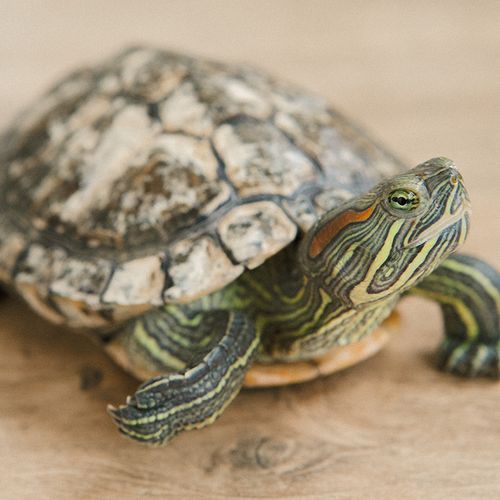Small pet turtles were to blame for 103 cases of salmonella infection in the second half of 2007, mostly in young children, US health officials said.
But the true number of infections with the potentially fatal bacteria is undoubtedly much higher, officials added.
Even though the sale of small turtles has been banned in the United States since 1975, the number of these reptiles being purchased for children has been increasing, according to the US Centers for Disease Control and Prevention (CDC).
"This is a larger number of cases than we would usually see," said Julie Harris, PhD, a CDC Epidemic Intelligence Service Officer. "We haven't documented such a large number of cases before associated with turtle exposure."
No deaths have been reported, but the infections led to the hospitalization of dozens of children, the CDC said.
The number of turtles owned by Americans has almost doubled in the last five years to more than 2 million, according to Dr. Harris, despite the fact that there is a ban on the sale of turtles that are under 4 inches in length.
New Cases Of Infections From Turtles
The 103 cases that Dr. Harris and colleagues reported in the CDC's Morbidity and Mortality Weekly Report represent just a fraction of the total number of salmonella infections from pet turtles, she said.
According to the report, cases were reported in all but 15 states, with most cases occurring in California, Illinois, Pennsylvania and Texas.
Two of the infected children included a 13year-old girl and a 15-year-old girl who became stricken after swimming in an unchlorinated inground pool owned by the family of the older girl. Two pet turtles, purchased at a South Carolina pet store were allowed to swim in the pool, the CDC reported.
Dr. Harris said many people aren't aware of the risk of salmonella infections from pet turtles, "Only 20% of these cases [in the report) said they were aware there was a connection between salmonella infection and reptile exposure," she said.
How Salmonella Is Spread
Up to 90% of turtles carry salmonella, Dr. Harris said. "This is a very serious infection, especially for small children," she added.
The infection is spread from contact with the turtles, but the contact doesn't have to be direct. "We have one case where a baby was bathed in a sink that turtle waste was disposed in," Dr. Harris said.
In some cases, the children put the pets in their mouths. In other cases, children became sick from just living in the same house with a turtle or other infected family members. Salmonella can live on surfaces for weeks, Dr. Harris noted.
Adults can get sick from salmonella, Dr. Harris went on to say, but children get much sicker. Some can die. "Small children should not be allowed to come into contact with turtles. The outcome is too dangerous and the risk is too high," she said.
Gastrointestinal symptoms, such as vomiting and diarrhea, caused by the bacteria typically begin 12 to 36 hours after exposure and generally last for two to seven days.
How To Protect Yourself
"Children tend to handle these turtles a great deal," said Pascal James Imperato, MD, MPH, the distinguished service professor and chair of the department of preventive medicine and community health and director of the master of public health program at the State University of New York Downstate Medical Center in New York City.
"Their fingers come into contact with all the material on the turtle and in the water. Then there is finger-to-mouth contact, and they acquire the infection," he said.
Dr. Imperato said that to protect themselves, people who handle these turtles should wash their hands thoroughly after touching the animals. They should also wash nearby surfaces, because the germ can also spread when salmo. nella-contaminated water gets splashed out of containers.
"The best strategy is not to purchase or touch these turtles," Dr. Imperato said.
